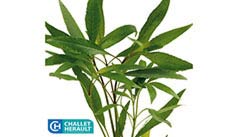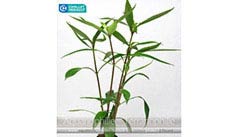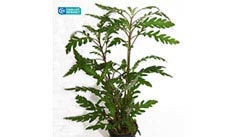

Alternative species (click on the thumbnail to see the card)
Names
Scientific name
Hygrophila Polysperma
Hygrophila polysperma Rosanervig
Hygrophila polysperma Big leaf
Justicia polysperma
Common name
Dwarf hygrophila
Dwarf hygro
Miramar weed
Indian swampweed
Indian waterweed
Origin

Origin: India, Bhutan
Ideal fertilization
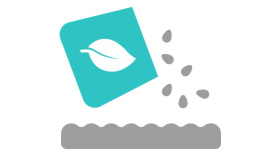
CO2: 10-40 mg/l
Nitrates (NO3): 10-50 mg/l
Phosphates (PO4): 0,1-3 mg/l
Potassium (K): 5-30 mg/l
Iron (Fe): 0,01-0,5 mg/l
Group
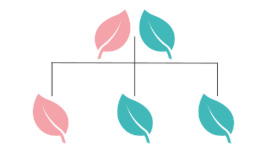
Acanthaceae
Kind
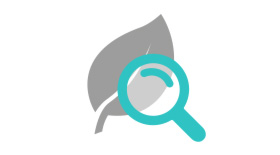
Stem
Parameters

T°: 22 to 28°C or 72 to 86°F
pH: 6.5 to 7.5
Hardness: 11 to 30°dGH
Difficulty

Easy
Lighting

Average
Size
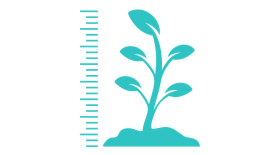
40 to 50cm (16 to 20")
Plantation
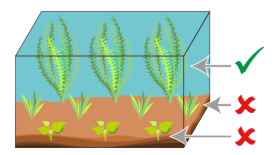
Background
Growth
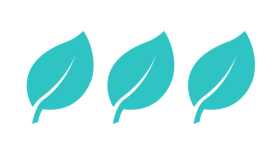
Rapide
Presentation
Who is the Dwarf hygrophila?
Presentation
Who is the Dwarf hygrophila?
It is one of the easiest plants to maintain in an aquarium. Moreover, its rapid growth seduces all those who start with aquatic plants.
This plant can grow in almost all freshwater conditions.
Planting and maintenance
How to plant and maintain the Dwarf hygrophila?
Planting and maintenance
How to plant and maintain the Dwarf hygrophila?
Given its imposing size, this plant will be more suitable for installation on the sides of the aquarium, or in the background as a plant curtain. For a good density while leaving space for the plant to develop, plant 5/6 feet every 20 cm (8").
It has a very fast growth rate which can give it a small invasive side. But on the other hand, this characteristic makes it a very good ally in the fight against algae (it consumes large quantities of nitrates, the algae are then deprived of them). It can reach a height of 50 cm (20"), and its leaves will be up to 8 cm (3.2") wide: it will therefore require an aquarium high enough for it to develop to the maximum. In any case, you will have to prune it regularly to avoid the risk of suffocating the other plants in your aquarium. Pruning is also useful because when it reaches the surface, the plant will be at a loss to stay in the water. This creates large areas of shade underneath that could be detrimental to other plants underneath. In addition, the leaves near the ground need light otherwise they detach and fall off the foot, leaving the stem completely bald, which is not very pretty. To prune your plant effectively, cut off the heads by about 20 centimetres (8") (which you can prick out if you wish).
Do not require any special fertiliser or CO2 input.
Farming
How to farm the Dwarf hygrophila?
Farming
How to farm the Dwarf hygrophila?
As soon as a stem separates, cut off the shoot (it must be at least 20cm (8") long) and transplant it a little further.
From time to time, replace old plants with new cuttings.
Good To know
Find all additional information!
Good To know
Find all additional information!
Very easy to maintain and extremely robust, this plant will make a good choice for beginners in aquarium keeping!
Be careful, in large quantities, this plant makes the water more acidic.
This species is polymorphic: it changes its appearance according to its environment. For example, the intensity of the light influences the appearance of the leaves (from green to red through orange and yellow shades). If it is kept immersed, its appearance will be even different.
This plant has variations, such as the Big Leaf, which looks the same but is much larger, or the Rosenervig, which turns red in good light:
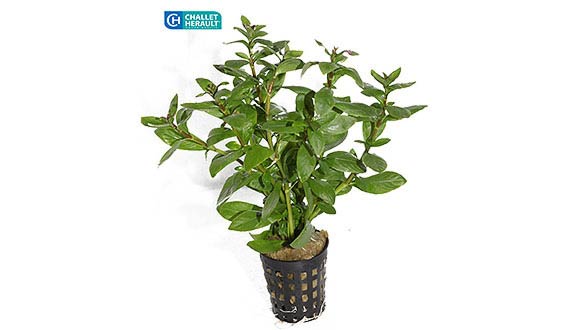
Yours photos!
Comments
Sort by:
Please login to post comments

